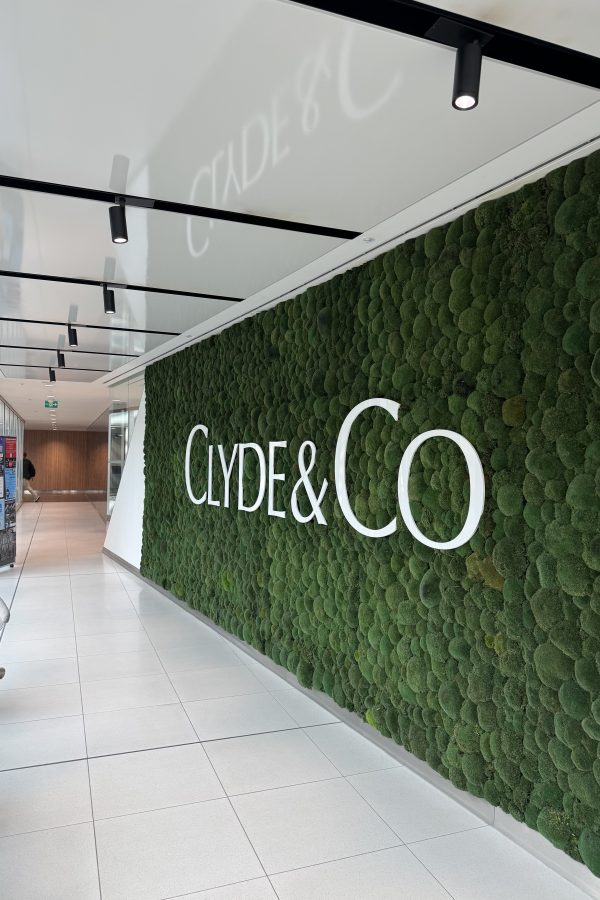Managed well, an employee network can bring a raft of benefits to its members and the organisation in which it operates. D&I experts tell Ashleigh Webber what they believe are the secrets to a network’s success.
From carers’ networks to LGBT and allies groups, most large law firms – and major employers in other sectors – will be familiar with employee networks and what they stand for.
Most fall into one of three categories: having a shared social identity, such as race, religion or sexual orientation; shared values, such as gender equality; and shared interests, such as achieving a healthy work/home life balance. Their purpose is usually to support, inform and empower employees, and – more importantly – are often able to help shape company policies.
But while employee networks do a good job at giving a collective voice to underrepresented groups and helping firms understand the barriers these groups face, there is a danger that introducing them can fall into the realms of becoming a “tick box” exercise, rather than a tool for improving equity and empowerment.
Dr Jonathan Ashong-Lamptey, who leads diversity consultancy Element of Inclusion and hosts a podcast on inclusion in business, says organisations face three challenges – people, potential and performance. If used in the right way, employee networks can be the “secret weapon” that will help address these issues, but will fall flat if proper consideration is not given to their purpose.
‘Cookie-cutter’ approach
He says their potential is rarely reached, and many organisations instead adopt a “cookie-cutter approach” in forming their employee networks – simply taking what has worked in other firms because they feel they have to be seen to do something, and applying it to their own organisation regardless of whether it is right for them.
“A lot of diversity and inclusion is actually events management – putting on parties, raising awareness, panel events. But how does that help you to engage, create a culture of inclusion and tackle performance issues?” Ashong-Lamptey says.
“Employee networks should have a clear purpose for what they want to achieve. They should not be immune from the basic rules we have in place in an organisation – they must have a purpose and strategy that’s aligned with a wider diversity and inclusion strategy, which should be aligned with the organisation’s strategy as a whole. You should be able to draw a clear thread between those. If you can’t, they’re a waste of time.”
Driving change?
Across the legal sector, there are hundreds of internal and cross-industry employee networks spanning a multitude of faiths, ethnicities, cultures, interests, common goals, and differences. But how successful are these at implementing change?
Some have played a major role in altering company policies, culture and views. For example, Eversheds Sutherland’s networks have influenced its policy on domestic abuse and its approach to gender signage in its offices, while its Verve Network, its race and ethnicity champions group, has helped develop recommendations and education in response to the Black Lives Matter movement.
“Our Verve Network has been instrumental in helping change the focus for our firm and helping us understand the experience and lives lived by our ethnic minority colleagues,” says Allison MacQuire, international head of recruitment at Eversheds Sutherland. “They have hosted listening sessions for all our people and have helped build a programme of development sessions on race and ethnicity.”
Elsewhere, Macfarlanes’ EnABLE network – which represents those with long term health conditions or disabilities – produced neurodiversity guidance in partnership with its HR team, as well as a video explaining the support on offer to neurodiverse individuals. The firm’s REACH (race, ethnicity and cultural heritage) network also worked on the delivery of a new BAME reverse mentoring programme at the firm, with support from senior leaders.
“All of the networks have mission statements and clear objectives that align with the firm’s wider D&I strategy,” says Louise Zekaria, head of inclusion and CSR at Macfarlanes. “Employee-led groups provide an important platform through which different groups are able to have a voice throughout the year – to express their views and offer a diverse range of perspectives. They have a key role in assisting with the development of programmes that support the firm’s diversity and inclusion strategy.”
Various D&I activity – including the introduction of a “contextual recruitment system” and unconscious bias awareness training – has been informed by the multitude of employee networks at Wedlake Bell. Networks at the firm include social mobility, gender equality, BAME, LGBT+, working families, faith and belief, disability and sustainability, and Wedlake Bell has a 10-person D&I committee comprised of partners and staff members.
Jonathan Achampong, head of diversity and inclusion at Wedlake Bell, says: “[Employee networks] have also allowed firm members to contribute to the organisation’s policies and given them a channel to voice their concerns and ideas.
“These groups have helped to raise awareness about various issues, provide a forum discussion and have a positive impact on members of the firm and the wider community. The business case for diversity has become increasingly clear in recent years and our activity in the field of D&I has helped to explain why D&I makes sense from a commercial standpoint.”
Strengthening employee networks
Firms recognise that a more equitable legal profession is not going to be achieved overnight, and employee networks are just one piece in a jigsaw of actions needed to instigate change. But how can their effectiveness be enhanced?
Laura Yeates, head of graduate talent at Clifford Chance, says employee networks must have a vision that is clearly aligned to that of the wider organisation and have a clearly articulated set of objectives. Equally important is the need for networks to produce impact reports that lay out achievements and their contribution to the wider organisational strategy.
Yeates also highlights the importance of buy-in from senior leaders. “There needs to be visible senior role models, active within the networks and advocating for change. There should also be visible senior sponsors who promote the work of the networks by amplifying their voice and help break down barriers the networks encounter as they pursue their objectives.”
Are they relevant?
André Flemmings, diversity and inclusion resourcing specialist at Macfarlanes, believes the main issue is one of relevance. “Most networks already align pretty well with firm-wide diversity aspirations, however their ability to offer practical and relevant support, influence practice-level inclusive behaviours, and impact wider business and people policy is the next big challenge for most,” he says.
“Strategically, successful networks will be the ones that develop a more intersectional understanding of their particular diversity strand, and leverage these insights effectively to influence people policies and create engaging learning materials that promote better allyship. If they do this well, they will reach more people and will have greater influence over day-to-day behavioural expectations.”
Eversheds Sutherland’s MacQuire notes the important role that cross-industry networks, such as the Noticed diversity network the firm is part of, play in driving change across the sector.
“As a sector, the law industry has some way to go to open up access, provide more opportunity and to engage and build more of a sense of belonging to underrepresented groups of people. Cross-industry networks help build that message, and in a way that is collective. We are much stronger as a sector than we are as individual firms.”
Avoid ‘awareness raising’
According to Ashong-Lamptey, the most successful employee networks he has come across have been given resources, collaborate both internally and externally, and focus on activities that drive incremental change – rather than putting on events around various “awareness days” in the corporate calendar.
“We need to do less of the ‘awareness raising’ and more of the practical things that will actually engage people and improve their careers. If there isn’t a clear value proposition, don’t do it,” he advises.
“These groups need to be given resources – that doesn’t always mean money, but it does mean time.”
MacQuire agrees: “We need to ensure each group has the right support from the firm, including access to a budget, sponsorship from the top, and the opportunity to share and tell their story.”
Most of the individuals who take part in employee networks and affinity groups will do so because they want to instigate change at an organisational and sector-wide level. Reinvigorating them and giving them the resources and visible support will not only benefit their cause, but also help meet wider corporate objectives.









